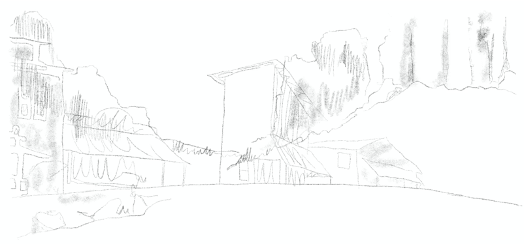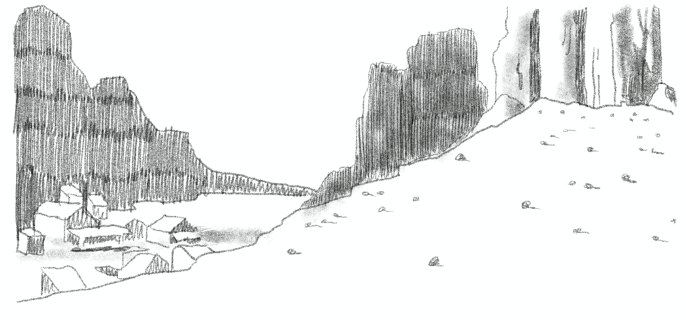
The cartoon I had bought, the one which featured a small-scale Paul Julian mural quietly embedded into his animation work, ended up not being what I needed. It arrived, almost mint, in a brown cardboard box sent from somewhere in Denmark. I took it with me to my dad’s house so that I could use his 8mm projector, and after setting up in the kitchen, aiming at a blank wall, my dad and I argued loudly until we finally managed to remember how everything worked. Once the film began to play, two issues became clear: firstly, it had been converted into black and white, and secondly it had been shortened to fit onto a single reel alongside another cartoon. The footage of the mural, in the process, had been cut.
It's October 15th, 1947, if that calendar on the wall is anything to go by. I'm waiting down here on the table and the guy’s still taking pictures. I’ve been here an hour or so. Nobody else has been here that long. Ships in the night. A few bodies stay a little longer, every so often, but the heads still change, and I guess if that's where the brain is kept then I can’t say I’ve ever had a friend who lasted more than a minute or two. I won’t be here forever, though.
Using my digital camera – the one with missing buttons where everything ends up recorded on ‘sunset’ mode – I started filming the projection anyway, regardless of the mural’s absence. This process of re-filming features in much of my previous moving image work; usually it involves one long initial take to capture the material in its entirety, preferably with its method of display visible, followed by a complete rewind to the start so that I can capture a series of shorter, more compositionally interesting clips, playing with the structure and content of the original material. When gathering footage in this way, texture and composition are generally my primary concerns; narrative has little bearing, save for visual changes or motions which might add further textural intrigue.
If I could see that chart over there a little better, I’d know how long I've got. It's my one chance in the spotlight, you know, even if it’s shared. Sometimes I get it really to myself, and that’s the best part of my day. All the others clear out and I just get to sit there and have my picture taken. The guy working the machine does rush those ones, though. He takes my solo picture and then he steps out for a break because when it’s me on my own it means that he’s got to a stopping point. He goes and smokes out in the lot, or heads out for lunch, and I wait here. When he comes back, I get changed.

For example: I’m filming the cartoon and zooming in as far as possible, until both the autofocus and I end up being unable to discern the grain of the film from the painted plaster of my dad’s kitchen wall. I’m following the empty spaces on the periphery of the action as they come and go, which means capturing the edges of the frame more often than the centre. The backgrounds are my objects of interest. The figures are annoyances, visual blips to work around. I am capturing these paintings for the second time in their lifetime; acknowledging their original form, seeing them as they once were arranged, and then moving toward a new way of looking.
In my town, the desert stretches outward. Neither I nor nobody knows what goes on over there. “Totality renders the world infinite, and thus distant: everything that belongs to you, that describes and reveals you, is far away, elsewhere, secret.” That’s from a book. “Totality at one and the same time inspires laughter and fear.” That’s from a different book. Here, in my town, the storefronts change without warning and in the distance the rocks have been exploded out of the flatlands. I tell you; it gets lonely sometimes.

Occasionally an emptiness passes me by – I am focused elsewhere – and so I reverse the footage and set myself up for a second chance. Filming in this way is about anticipating your own editing needs. The finished cartoon becomes – as it was on the editing desk, in the storyboards, and whilst sandwiched under the plate glass in the photographing room – raw material to be cut up, re-spliced, and turned into something new, with its focus shifted.
You could visit my town if you like. I’m not really inside it, and I can’t really see it either, but I do know what goes on. Mostly that amounts to nothing, but I don’t mind. You might like it. It only seems like it would feel really hot, and you don’t actually have to deal with the dust. The rocks are sharp but only if you look at them for a second; if you keep on looking you notice that the shadows don’t meet the floor and there’s space enough to move around forever.
